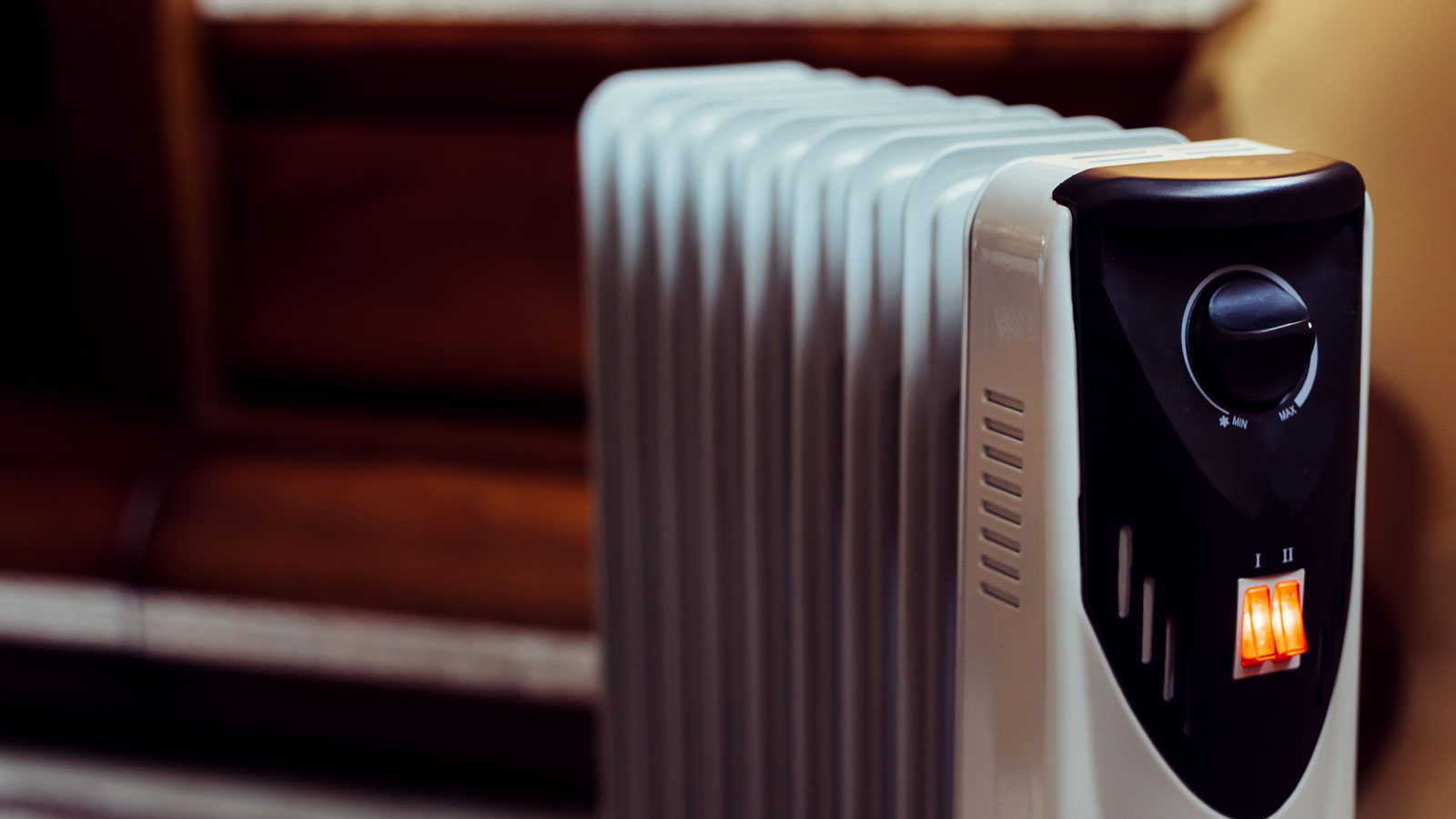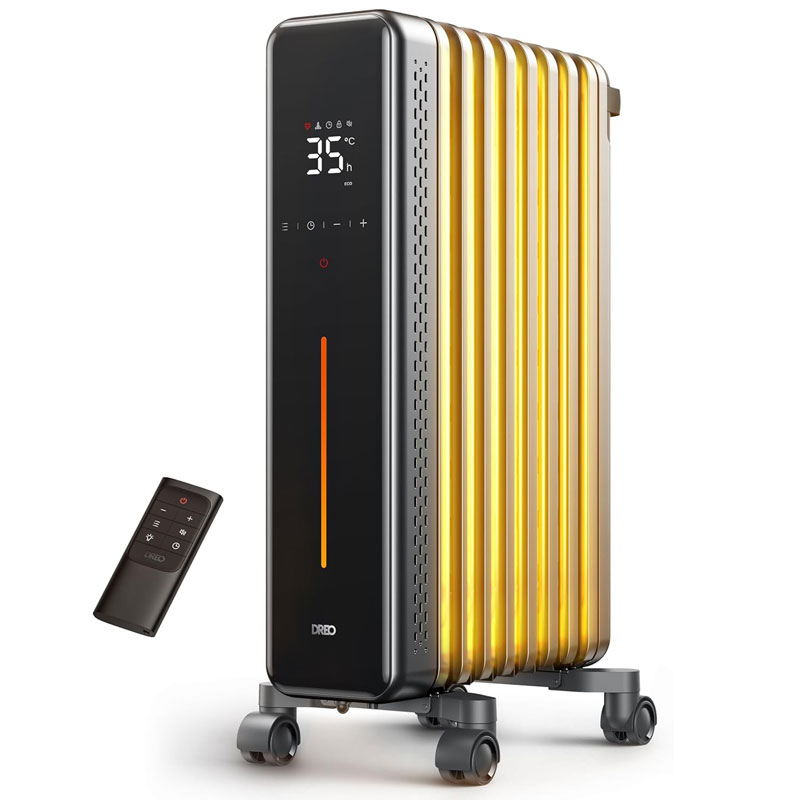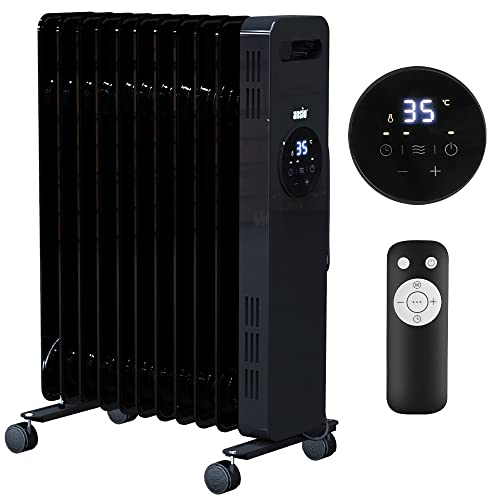Oil filled radiator vs convector heater: Which is best?
Oil filled radiator vs convector heater? Expert reveals how they work and their pros and cons to help you decide which will work best for you

Oil filled radiator vs convector heater; which one will give you a quick hit of heat to warm up a space? The simple answer is that they both will, but in different ways. One will give an almost instant heat while the other will retain the heat for longer.
They don’t work like the plumbed in types of radiator you typically have in your home, but they are a handy addition for colder rooms that need a boost. But which you need isn't always an easy decision. Both have their plus and minus points, and in this guide we help you decide which you should choose when the temperature drops.

Adele Brennan has 11 years’ experience within the retail industry and currently specialises in home electrical products. Within her current role, she is responsible for sourcing and choosing high-quality products for retail.
Oil filled radiator vs convector heater: Key differences
While both provide heating for the home, convector heaters and oil filled radiators work in very different ways to produce and output heat. Adele Brennan, home electricals buyer at VonHaus goes into more detail on how they work, “Oil filled radiators work by heating up a reservoir of oil inside the radiator, which then transfers the heat to the radiator’s metal fins.”
And it's the fins that output the heat as Brennan adds, “These fins then radiate the heat into the space, helping to keep rooms warm, even after being switched off.” Oil filled radiators, shares Brennan, “Usually come in a range of different sizes.”
This can refer to their physical size and the output of the radiator itself. Mini filled radiators like this VonHaus Mini Oil Filled Radiator (available from VonHaus) can output around 800W, making them ideal for smaller space such as a bedroom or home office. Larger models like this De'Longhi Dragon 4 Oil Filled Radiator from Amazon, have an output of 2000W and are suitable for space up to 60m2.
Convector heaters - as you might expect - do not use oil to produce heat as Brennan explains, “Convector heaters pull in cold air from the bottom and circulate it through the heater, creating hot air.” She adds “These heaters tend to be better known as panel heaters and are great for heating larger spaces.”
Try these portable oil filled radiators to heat up a space
Pros and cons of an oil filled radiator
Here Adele Brennan from VonHaus points out the plus and minus points of oil filled radiators to help you decide if they are for you.
Bring your dream home to life with expert advice, how to guides and design inspiration. Sign up for our newsletter and get two free tickets to a Homebuilding & Renovating Show near you.
+ Long-lasting heat
The oil inside stays hot long after being switched off, which helps to keep rooms warmer for longer – a huge bonus in colder temperatures. The oil also heats evenly throughout the radiator, meaning you’re getting the most from the radiator.
+ Aesthetics
A lot of oil filled radiators come in a range of different sizes and colours. Sizes can range from 5 fins right up to 17 fins, and there are even some closed fin models available too. You can now also get smart-operated radiators which link up to apps on your phone.
+ Safety features
Most oil filled radiator models come equipped with overheat protection and a tip over switch. This means that there is no concern of the radiator overheating, and if the radiator is tipped over it will switch off automatically.
- Slower to heat up
Although a lot of oil filled radiators can now heat up fairly quickly, you may still notice that you’re not feeling the heat as quickly as other heaters
- Not suitable for larger/open spaces
Although oil filled radiators can come in a range of sizes to suit different sized spaces, you may find that these models may not heat large rooms or open spaces as adequately.
- High surface temperatures
Oil filled radiators are very hot once heated, making them potentially dangerous for families with pets and small children.
Try these convectors heaters to warm up your home
Pros and cons of a convector heater
Here Adele Brennan looks at the positives and negatives of convector heaters to help you with your buying decisions.
+ Quiet
Most convector heaters are often very quiet as they’re only circulating air, making them an ideal choice for home offices or bedrooms.
+ Quick heat
Convector heaters can warm a space pretty quickly which is helpful for those looking for instant heat.
+ Lower price point
Most convector heaters tend to be cheaper in price, making them a good budget option.
- Poor air quality
Convector heaters are powered by air circulation, but don’t have air filters, which means they can circulate dust and potentially make allergies worse.
- Dry air
Convector heaters can dry out the air, which could cause issues for those with sensitive skin or breathing issues.
- Expensive to operate
Electric convector heaters can be expensive to run for long-term use – they aren’t designed to be used over long periods of time.
Which is cheaper to run: Convector heater or oil filled radiator?
As a general rule Brennan says, “Oil-filled radiators are generally more energy efficient than convector heaters because they retain the heat that is generated due to the oil staying hot, making them more cost-effective.” Check our oil filled radiator cost to run guide for more details.
But on the flip side she says, “It could be argued that convector heaters could be cheaper to run as they warm up quicker, which means you could end up using the heater for less time which would save on running costs.”
However, the running costs are dictated by the power of the appliance in kilowatts and the cost per kWh. Multiply these two together and you will get the running cost of the unit. The rate as of October 2024 is 24.50 pence per (kWh). Multiply this by the power and you get the cost per hour. For example, a 2000W (2kW) heater is 49p per hour (24.50p x 2kWh = £0.49).
Check out our central heating costs per hour guide to get a comparison of running costs between the different heating solutions.
Oil filled radiators and convector heaters are great for short bursts of heating. But they need to be complemented by a more complete form of heating. Take a look at our underfloor heating guide, most economical way to use central heating and how to choose heat pumps as alternatives to heat your home.
Steve Jenkins is a freelance content creator with over two decades of experience working in digital and print and was previously the DIY content editor for Homebuilding & Renovating.
He is a keen DIYer with over 20 years of experience in transforming and renovating the many homes he has lived in. He specialises in painting and decorating, but has a wide range of skills gleaned from working in the building trade for around 10 years and spending time at night school learning how to plaster and plumb.
He has fitted kitchens, tiled bathrooms and kitchens, laid many floors, built partition walls, plastered walls, plumbed in bathrooms, worked on loft conversions and much more. And when he's not sure how to tackle a DIY project he has a wide network of friends – including plumbers, gas engineers, tilers, carpenters, painters and decorators, electricians and builders – in the trade to call upon.







